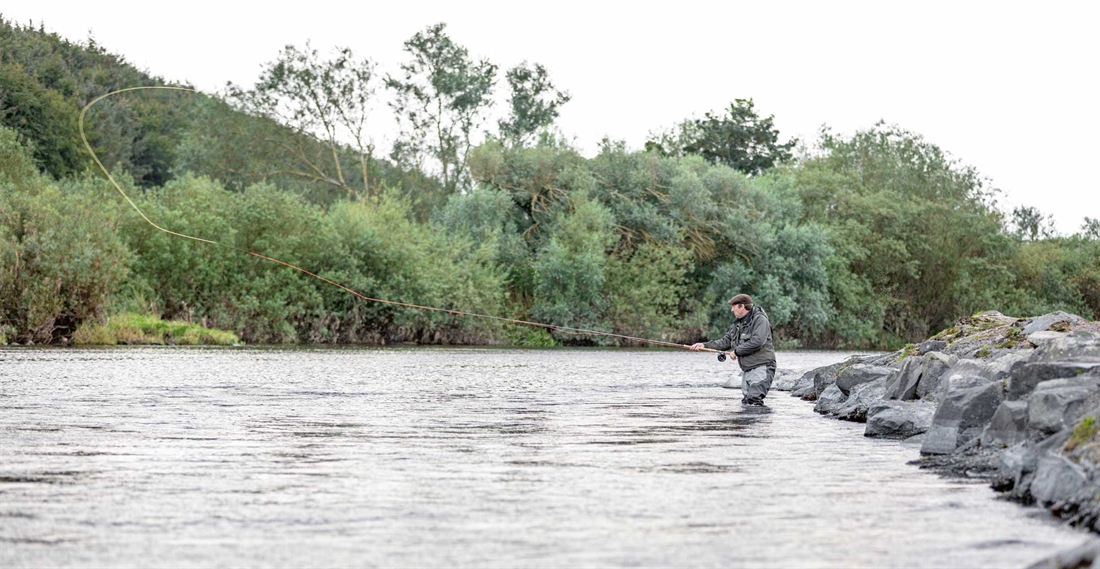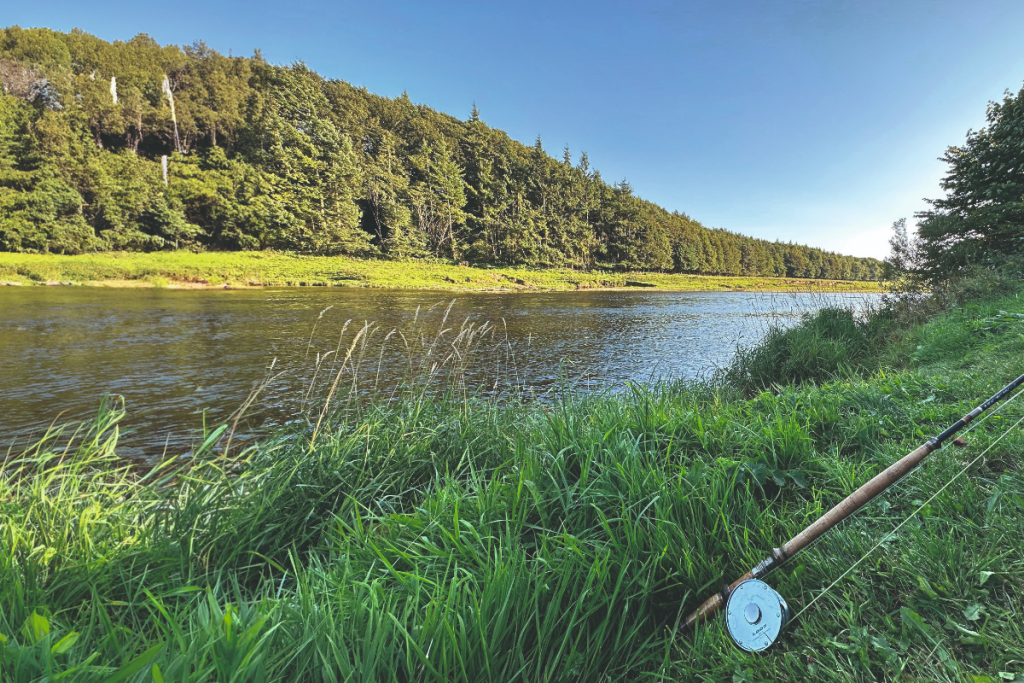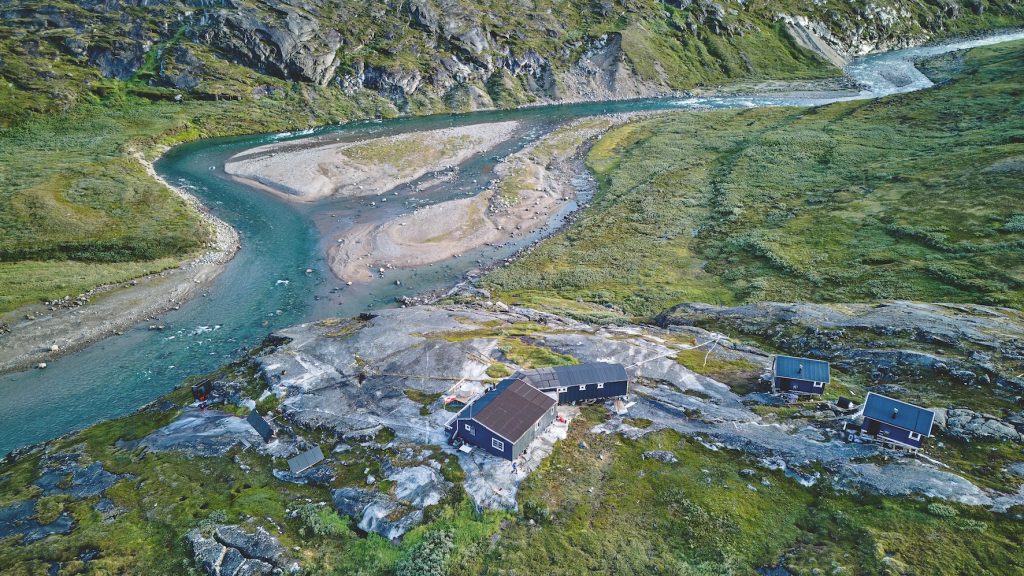There’s always something
A testing autumn Atlantic salmon sojourn on the River Tweed.

Any salmon fisher will know that there is always something wrong; the water’s too high, too low or too coloured, and the conditions are too bright, too warm or too cold, and so on.
“There’s fish about, she’s dropping in nicely and the next couple of days look good,” said the ghillie on arrival to our beat on the Tweed, causing optimism and excitement to run riot. Normal mundane tasks became a challenge. Putting the rod together, attaching the reel, stringing the rod only to miss an eye halfway up, tying on the fly, hell, choosing a fly all became seemingly difficult and unusually demanding. Keep calm.
No excuses were viable this time. We were on an excellent beat, the river was dropping from a small, clear rise and late-summer salmon and grilse were showing in each of the pools – we were sure to make hay. But I forgot to mention one important element: the wind. At the hut it was breezy, nothing too bad, strong enough for the resident ducks to be whistling overhead in a manner that turned our thoughts to their imminent open season. At the river’s edge it was a different matter, though. Blowing hard, straight downstream it was horrendous. Gusty and constantly changing direction, one was forever at risk of hooking a double into the wading jacket. It was the type of wind that forces your eyes to close the minute you sit in a comfy chair, standard in most fishing huts. On the left bank the wind occasionally abated enough for some Single Spey or Snap-T casts, but casting from the left shoulder or using the Double Spey technique was the safest way to keep the fly away from one’s ears, sensibly avoiding the ‘chuck and duck’ off the right shoulder.
The Cauld, a noted hotspot, had fish showing in all the right places. Expectation was high and it didn’t disappoint. As I watched on, one of the team played a good fish in fast water for 10 minutes. In the strong flow it was always below him, something none of us like, and sure enough, just a few yards from the net, the hook pulled out. The netsman was the closest person to blame, of course, and in true best friend manner he was not sympathetic to the loss and out came a return barrage of profanities! News from up-river was good, Matt Kidd had broken his salmon duck with a 6lb grilse and we were off the mark. As we met that evening, well and truly battered by the incessant and unrelenting wind, it was clear wehad some fish in the beat with the rest of the party having all had offers. Soft, nippy, little offers typical of grilse.
Day two brought more of the same – fish lost or missed for everyone and more howling wind. The takes were the same and we were all frustrated by the poor conversion rate which was a consistent theme from surrounding beats. As luck would have it, I found myself fishing The Cauld in the evening, and right on cue, a pull, tug, half a turn of line off the reel and off it came. Now I don’t know about you, but if a wee tube fly complete with a prickly treble goes anywhere near my clothes, fingers, a bush or a snag, it grabs it and will not give it back, so how on earth does a grilse take hold, pull line from the reel and not get hooked?
On the final morning of our stay our host received a call from the ghillie. “Gauges are rising so if you’re going to fish it needs to be in the next hour. After that it’ll be washed off”. We rushed down to the beat. My third cast saw another offer, just the same. More frustration. Then, about 15 minutes later and with the ghillie on my shoulder, finally the line tightened. I gave the fish what seemed an eternity before I lifted into the him. At last, a fish was on. A short fight later and we netted a sparkling, fin-perfect grilse of 3lb. Small, perfectly formed and outweighed by the relief. A fish is a fish and let’s not forget, “they don’t make diamonds the size of golf balls!”
Tight lines for the remainder of the season.
Related Articles
Get the latest news delivered direct to your door
Subscribe to Fieldsports Journal
Elevate your experience in the field with a subscription to Fieldsports Journal, the premium publication for passionate country sports enthusiasts. This bi-monthly journal delivers unparalleled coverage of game shooting, fishing and big game across the UK and beyond.
Each issue offers a stunning collection of in-depth features, expert opinions and world-class photography, all presented in a timeless yet contemporary design.
Save 10% on shop price when you subscribe, with a choice of packages that work for you. Choose from Print & Digital or Digital only with each journal delivered directly to your door or via the app every other month, plus access to past issues with the digital back issue library.








